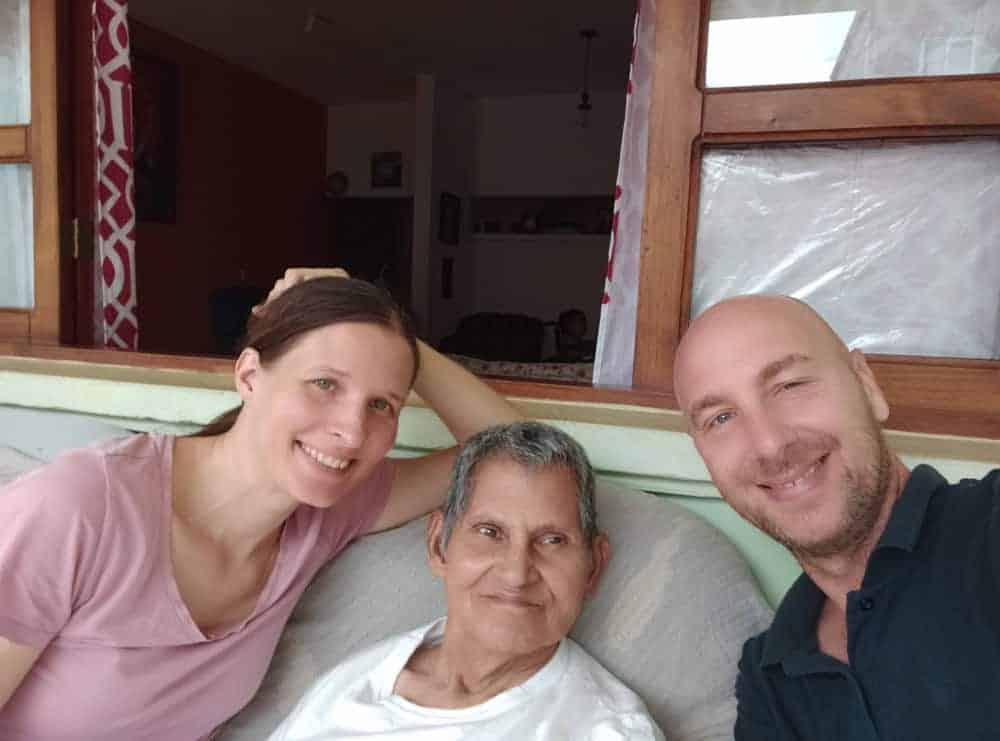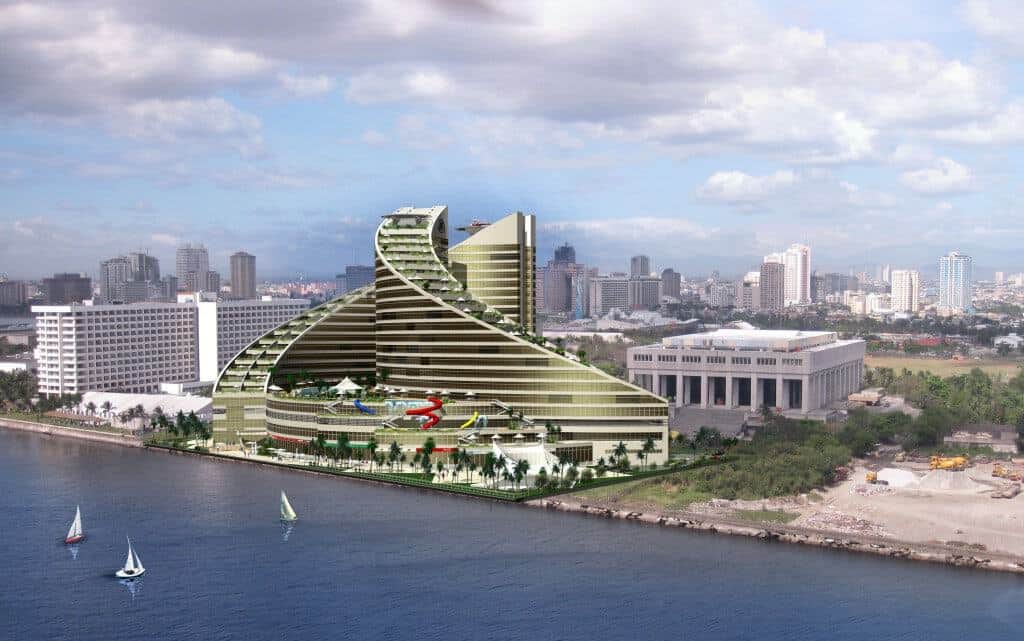
Source: Skyscrapercity
Asia, particularly its coastal parts, has always been an attractive tourist destination. Fine beaches, friendly people and low prices.
Ten years ago, when I spent three months travelling through Thailand, from south to north, I even met Europeans who decided to spend the whole winter in this warm country.
According to their calculations, it pays off to switch off the heating back at home and spend winter in Thailand, Laos or Cambodia, where they can also have their teeth fixed or receive some other medical treatment that would be much more expensive in Europe. Not everyone can afford that, but boy, what a lifestyle!
Another World
Hidden in this romantic tourism is another world, though, which is not advertised by agencies, and is usually ignored by tourist visitors.
When we travelled across Europe last year, we received a letter from fr. Marjan Kokalj, a Jesuit who spent six months at the Philippines.
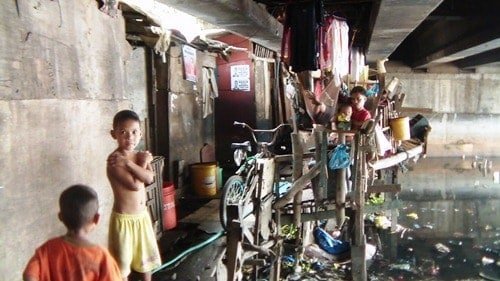
Describing his missionary experience, he pointed out Navotas, the poorest district of Manila. The time spent in that city affected him profoundly:
‘I spent three weeks with these people, sleeping in their destitute homes, witnessing true poverty. Rats are part of their everyday reality, the heat and moisture, floods when it rains, drainage water mixing with rain, lack of room, no privacy whatsoever – everything is public, including your body – washing and sleeping is public, peeing is anywhere around houses and streets.’
But that was not all. He also told us about the great happiness and closeness of the people he experienced there. He suggested we should travel to that part of the world, too.
Backpacks All Ready
We accepted the challenge and established a connection with the Pag-aalay ng Puso Foundation (Offering of the Heart Foundation), a non-profit organisation that helps the poorest inhabitants of Navotas. All is set, tomorrow we travel there directly from Brussels.
We intend to stay in Navotas for one month, and then travel through other poor Asian countries to do the missionary work for a year. As always, we will report about it in our blog.
Human Bats
The city of Navotas is known as the ‘fishing capital of the Philippines’, as it is located right at the coast of the capital, Manila. Navotas has about 250,000 inhabitants, most of whom live in so-called slums, barrack settlements, in conditions that the Westerners can hardly imagine.
Barracks settlements in Navotas are one of the poorest in Manila. People living here are called ‘bats’.
People set up their barracks deep under road bridges, where there is no light at all. There is no electricity, so they live in the dark. The lucky few who live at the edge of bridges can secretly wire their home or enjoy daylight. Unfortunately, the situation in this part of Manila is deteriorating or at least not improving.
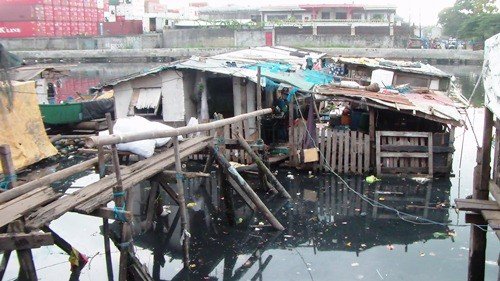
Risk Required for Survival
Navotas is known for its “floating houses”, barracks built on rafts in the dirty water by the coast.
Their main income comes from the collection of waste material in the waters of the Manila Bay, as this coastal part of the Philippines capital is called.
Their ‘catch’ is sold in cheap goods stores all over the city. Diving in these waters is extremely risky, though.
We read that two men died after they found an unexploded mine deep in the sea, a remainder of the Japanese naval battles during World War II. The mine exploded as they sawed a metal frame.
Slum at the Graveyard
In 1975, a powerful typhoon in the Philippines forced hundreds of families from Samar, Leyte and Bicol to leave their homes. They resorted to one of the few uninhabited coastal areas – the large deserted dump between the Manila Bay and the graveyard. They settled there illegally and arranged their ‘homes’.
What Was the Graveyard They Settled On?
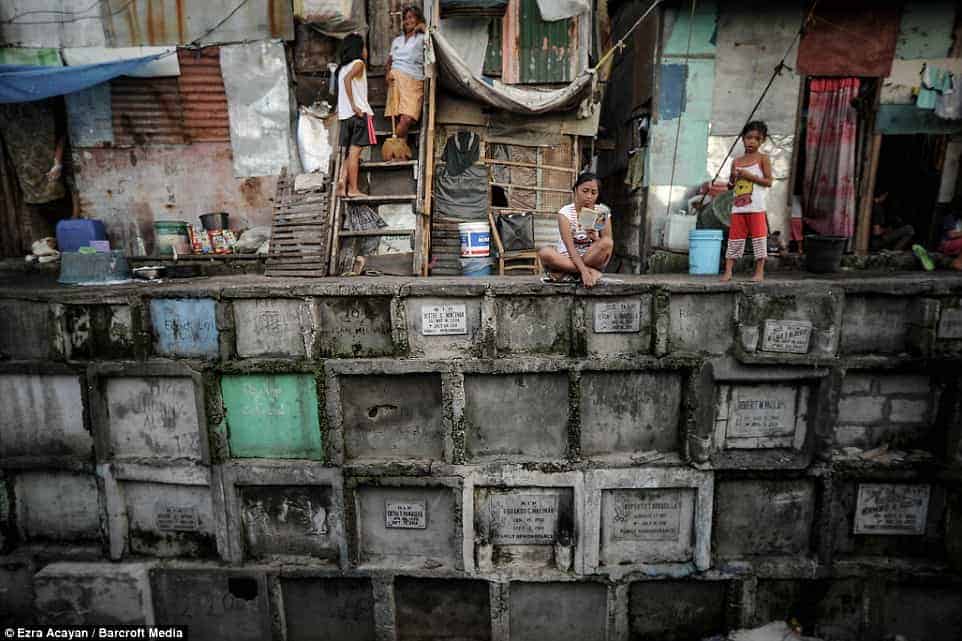
When a man dies, his body is lied in a concrete box. These boxes are piled one on another along the coast. People of Navotas see the tall concrete surface, the top of the graveyard, as a suitable option of accommodation.
Many of them set their barracks on top of these graves, their children running around and playing happily. Live goes on normally, like anywhere else.
This was the origin of one of the most abandoned, poor settlements where some 6000 people live at the moment. This is the so called ‘graveyard slum’.
Is This Even Possible?
As you can well imagine, criminal as well as drugs and alcohol abuse soon prevailed in these slums, while hygiene and medical care practically do not exist.
In addition to rats and cockroaches, people lack food. Walking around the settlement, one often encounters human bones and skulls. Many of the dead bodies buried in the ground are often dug up by people looking for their deceased relatives. If they do not recognize him, the remains are simply left on the ground.
Bright Light – Offering of the Heart
I know, it’s shocking. We were also shaken when we read the testimonies of many visitors and talked to people working in this part of Manila. One can really wonder if God decided to turn a blind eye to these people.
But the people of Navotas are not alone in this misery, they are not left to themselves.
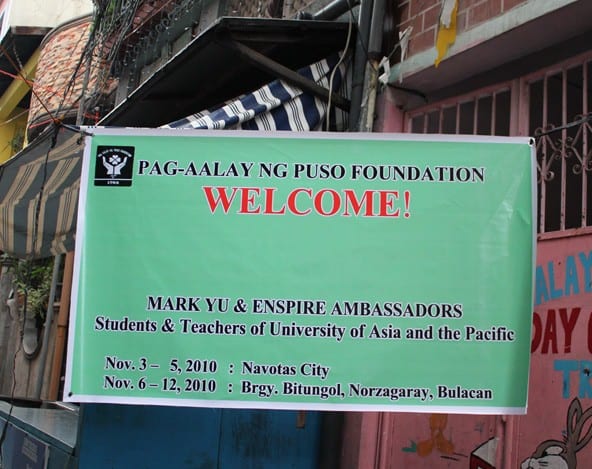
Pag-aalay ng Puso (“Offering of the Heart”) Foundation started operating in 1988. Their main mission is to help the poorest of the poor. They help them create better living conditions, which are decent and worthy of people.
They realized that this can be done most effectively by raising awareness and education.
Through various educational programs, people learn very practical and everyday skills, such as health and hygiene care, as well as communication, proper education, and all that is necessary for a quality life.
This way, people get the opportunity for education and departure from the slum to a better future.
Share Poverty
Offering of the Heart Foundation also builds up a network of volunteers from all over the world, enabling them to stay with families in slums and experience life among the poorest in Navotas first-hand.
We are also staying with one of these families and, like I said, we are in for a month of life very different from the missionary trip across Europe.
Join Us
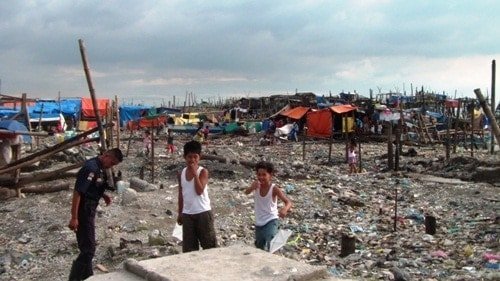
Is God present in such poor parts of the world? Is God working there and how?
This is what we want to reveal in Operando. Silva and I firmly believe that we will find His traces and His heart in these lands, too. We look forward to it!
Of course, we kindly invite you to join us. Not only in Navotas, but everywhere where God will guide us this year.
We wish you blessed Easter holidays and an open heart so that you will be able to discover the Lord’s pulse in your daily life. Yes, he was crucified, but he also rose from the dead! Death really does not have a place in this world.
Nace Volčič
